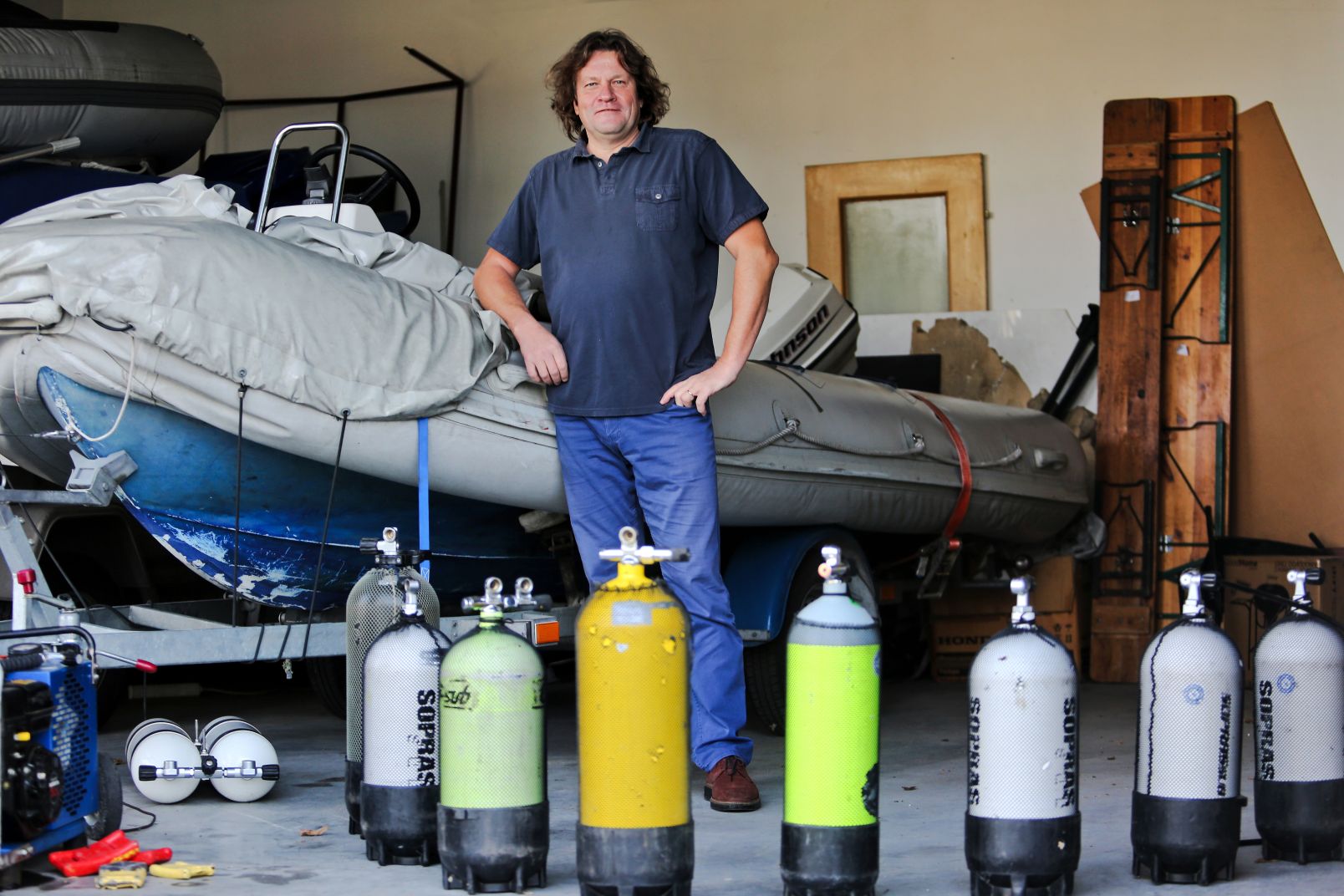- Sergio Hyland's background: Former prisoner turned abolitionist advocate, with prior homicide convictions, arrested in 2025 for murdering a mother of two and possessing illegal guns, now facing prosecution by the DA he once supported.
- Value of incarceration: Keeps dangerous repeat offenders out of society, as illustrated by Hyland's case, echoing James Q. Wilson's emphasis on incapacitation over root-cause fixes.
- Crime concentration: Violent crime committed by a small group of repeat offenders, with studies showing 3-6% of males responsible for over half of arrests, including patterns in Philadelphia, Boston, and Sweden.
- Underestimation of offending: Offenders commit many more crimes than detected, with self-reports indicating 25+ offenses per arrest, especially among those with psychopathic traits and poor impulse control.
- Policy implications: Incapacitating repeat violent offenders could reduce crime by 50-80%, per Swedish data, prioritizing separation of antisocial few from the pro-social majority over social engineering.
- Critique of modern views: Rejects "overincarceration" premise and causal fallacy focusing on root causes like injustice, instead affirming wicked people exist and must be restrained to protect community order.
- Wilson's legacy: Thinking About Crime advocates practical policy via longer sentences and prosecutions, countering left-wing reforms that release high-risk individuals, as seen in policies like Bragg's memo.
Sergio Hyland seemed like the perfect advocate. Calling himself a “fierce, relentless, implacable abolitionist,” determined to end incarceration in the United States, Hyland had spent more than two decades behind bars before joining Pennsylvania’s Working Families Party as an anti-prison organizer. His criminal record only burnished his credentials: he had pled guilty to the 2001 killing of a 15-year-old and was later charged in connection with another homicide in 2002. Once he got out of prison in 2022, Hyland launched a website offering “speaking engagements” and “harm/de-escalation tactics” training, and he frequently appeared alongside Philadelphia’s progressive prosecutor, Larry Krasner. The two even shared a news release in April 2025 announcing the Working Families Party’s endorsement of Krasner, which the prosecutor was “honored to accept.” A week later, Hyland was arrested for murdering a 30-year-old mother of two. Police discovered a stockpile of illegal guns in his home. Now Krasner’s office will have to prosecute him.
Not every violent offender commits murder after his supposed rehabilitation, of course. And Hyland has not yet been convicted of this latest charge. But his arrest for a new heinous crime suggests a broader insight that political scientist James Q. Wilson long emphasized: incarceration is often valuable simply because it takes dangerous people out of circulation, removing them from society.
Finally, a reason to check your email.
Sign up for our free newsletter today.
It’s fashionable to blame America’s high incarceration rates on social injustice—and law enforcement—rather than lawbreaking. If policymakers would just provide disadvantaged people with sufficient resources and economic opportunity, on this view, the crime problem could be solved. That utopian vision gained traction during the mad summer of 2020, when activists, rioters, and the mainstream press, reacting to the death of George Floyd in Minneapolis, sought to replace law enforcement with programs that target the root causes of antisocial behavior. “As a society,” wrote activist Mariame Kaba in the New York Times, “we have been so indoctrinated with the idea that we solve problems by policing and caging people that many cannot imagine anything other than prisons and the police as solutions to violence and harm.”
The truth is otherwise. As Hyland’s case exemplified, violent crime is overwhelmingly the work of a small group of repeat offenders—that is, it is highly concentrated. The remedy, as Wilson argued half a century ago in his classic book Thinking About Crime, is not social engineering but incapacitation: keeping the violent few from striking again.
Most people are not teetering on the edge of felony, waiting to become, in the Left’s favored euphemism, a “justice-impacted individual.” The overwhelming majority of Americans never engage in serious criminal behavior, let alone commit violent felonies like murder or armed robbery. But those who do are likely to do so again, the evidence shows. Indeed, crime’s concentration is one of the most well-established findings in social science. In 1972, University of Pennsylvania criminologist Marvin Wolfgang reported that just 6 percent of males in a birth cohort accounted for 52 percent of all police contacts. (Violent crime, in particular, is overwhelmingly committed by young males.) Thirty years later, a similar study in Boston found that 3 percent of males were responsible for more than half of their cohort’s arrests after age 31.
The pattern holds across time and place. In 2014, data showed that three-quarters of state prisoners—the core of America’s incarcerated population—had at least five prior arrests. Nearly 5 percent had 31 or more, a larger share than those imprisoned after just a single arrest. In 2022, the New York Times reported that “nearly a third of all shoplifting arrests in New York City . . . involved just 327 people,” or 0.004 percent of the population, who had been “arrested and rearrested more than 6,000 times.” And in Oakland, a gun-violence-prevention group found that about 400 individuals—0.1 percent of the city—were responsible for most of the city’s homicides. Violence is concentrated geographically as well. It occurs primarily in poor minority neighborhoods, whose members make up most of its victims.
These figures may even understate how concentrated antisocial behavior is. Wolfgang found that the offending minority committed dozens of crimes for every one that led to arrest. Fifty years later, a similar study reported that delinquent youth “self-reported over 25 delinquent offenses for every one police contact . . . with some youth reporting upwards of 290 delinquent offenses per police contact or arrest.” Combined with the fact that more than 60 percent of violent crimes reported each year go unsolved, the implication is clear: by the time a violent offender ends up in prison, he has likely committed multiple violent acts and many lesser offenses. Again, these patterns are most common among young men “who exhibited more psychopathic features,” the 2022 study’s authors noted, and “who displayed temperamental profiles characterized by low effortful control and high negative emotionality.” As a massive study from Sweden concludes: “The majority of violent crimes are perpetrated by a small number of persistent violent offenders, typically males, characterized by early onset of violent criminality, substance abuse, personality disorders, and nonviolent criminality.”
The case for an incapacitation-first approach to crime control follows directly from these indisputable facts. An analysis of the Swedish paper reveals that violent crime would fall nearly 80 percent if perpetrators could be prevented from re-offending after their first conviction and would fall by half if they were fully incapacitated after their third. So concentrated is violent crime among a profoundly antisocial few that making even a tenth violent conviction punishable by life without parole would cut overall violent crime by 20 percent.
 Convicted Philadelphia murderer Sergio Hyland became a prison abolitionist—only to be charged with committing a new killing not long after he was released. (Sabina Pierce)
Convicted Philadelphia murderer Sergio Hyland became a prison abolitionist—only to be charged with committing a new killing not long after he was released. (Sabina Pierce)
It is intellectually interesting to try to discover why the five steal and the ninety-five do not,” Wilson wrote in Thinking About Crime. Yet from the point of view of public policy, he maintained, “such explanations are of little value, because government has no way of changing in any systematic fashion family backgrounds, deep-seated attitudes, friendship patterns, or media images.” Even if government were able to do these things, he continued, “the cost would be frightful—not only in money terms . . . but also in terms of those fundamental human values that would be jeopardized if government possessed the capacity to direct the inner life of the family or to mold the mental state of its citizens.”
Thinking About Crime remains the clearest articulation of a public-policy approach to criminal justice. Wilson began from the premise that a community cannot flourish under conditions of pervasive disorder. Public policy, he argued, must therefore manage crime effectively enough to secure a basic level of order—without utopian illusions but with attention to cost and “fundamental human values.”
Given crime’s extreme concentration, this chiefly means separating the antisocial few from the pro-social many. “What the government can do is to change the risks of robbery,” Wilson wrote, “and to incapacitate . . . those who rob despite the threats and alternatives society provides.” Of the punishments not deemed legally cruel and unusual, only incarceration and capital punishment guarantee incapacitation. Wilson became the leading voice in the latter half of the twentieth century pressing for more prosecutions of the antisocial few and longer sentences to keep them off the streets.
For decades, Americans intuitively accepted incarceration as justified by incapacitation. It fell out of favor, thanks to a long period of success and low crime rates, which provided an opening for activists and critics to make arguments about “mass incarceration.” Now, after years of criminal-justice reforms and anti-policing measures, crime has returned as a kitchen-table concern, but Wilson’s insights have faded from memory. We are not only far from reaffirming his conclusions; we have lost the habit of asking his questions.
Yet today’s debate over crime and punishment typically still begins with the premise that America suffers from “overincarceration.” Nearly 2 million people are held in prisons, jails, juvenile facilities, and other detention centers. As abolitionists and police-defunding advocates repeat, the U.S. rate of roughly 580 incarcerated individuals per 100,000 people remains the highest in the Western world. Starting from this premise, so different from Wilson’s public-policy approach, activists naturally ask whether the nation is locking up too many people.
As Thomas Sowell has observed, criminal justice is the only field where the first question often asked is what benefits the criminal rather than what protects the law-abiding public. Why? Wilson blamed “the causal fallacy”—the belief that “no problem is adequately addressed unless its causes are eliminated.” Embracing this fallacy turns policy on its head: a discussion that should focus on what best serves the community instead becomes a philosophical and anthropological search for the prime mover of antisocial behavior. “Wicked people exist” was Wilson’s conservative answer. That axiom is unacceptable to those unwilling to accept a moral view of human nature. And our discomfort with incapacitating the wicked has grown as the causal fallacy has taken deeper hold.
A half century after Thinking About Crime, the U.S. criminal-justice system has lost sight of its fundamental purpose, while the American public is less willing to accept the need for an incapacitation-first approach.
The modern view wrongly treats crime as a dispute between perpetrator and victim. Television dramas that let victims decide whether to “press charges” reflect this confusion. In reality, prosecutors represent “the People,” the political community harmed whenever one of its members is attacked or the law is broken within its borders. Antisocial behavior is an assault on the social order itself. Each crime signals that law-abiding citizens cannot rely on shared norms, forcing them to approach daily life with suspicion rather than goodwill. Lawlessness drives the law-abiding away; yet their interests must come first.
When they don’t, the results are predictable. Manhattan district attorney Alvin Bragg’s notorious Day One memo, for instance, laid out an anti-prosecution manual that divided offenses into two categories: a narrow set of “public safety” crimes warranting punishment; and others—such as theft, trespassing, or driving with a suspended license—that did not. Embracing the causal fallacy, Bragg promised to treat “nonviolent and minor offenses” with “root cause” strategies instead. New York went further, barring judges from considering whether defendants pose a risk of re-offending when setting bail. The effect is obvious: dangerous individuals who should be incapacitated remain free.
This mind-set is not confined to New York prosecutors; it reflects a broader cultural shift. Recurring “national reckonings” over race and identity have trained many Americans to see disparities as products of nebulous systemic oppression. Critical theory represents the ultimate root-cause hunt, insisting that hidden forces, not individual agency, explain failure or success. Diversity, equity, and inclusion efforts are justified as attempts to counteract these supposed causes. Today’s social-justice politics begins from the premise that finding root causes defines good policy. No wonder victimhood is coveted: it declares that one has been wronged through no fault of his own, obligating society to make amends. From here, it is only a short step to the ultimate causal fallacy: nobody deserves prison because individuals cannot fail society—only society can fail individuals.
The American Left cannot resist this reasoning. Its progressive wing, ascendant in the Democratic Party today, has embraced an ethic of moral luck, treating individual choices as mere reflections of unchosen circumstances. The Right, by contrast, retains the intellectual resources to return to first principles: so long as a lawbreaker threatens the good order of society, he must be restrained. The Right will need to bring this message forcefully to the places where it is most intuitive yet least familiar.
Wilson’s challenge to America was simple: acknowledge that some people must be prevented from preying upon others, whatever the origins of their behavior. Half a century later, his insights remain unrefuted. The best tribute to his legacy is to restore the habit of thinking about crime as a policy problem—and to reaffirm that incarceration is justified by incapacitation alone. We can keep chasing root causes while communities suffer. Or we can return to the essential work of protecting civilization from acts that Wilson rightly called “destructive to the very possibility of society.”
Tal Fortgang is a legal policy fellow at the Manhattan Institute.
Top Photo: In 2014, data showed that three-quarters of state prisoners had at least five prior arrests. (txking/iStock/Getty Images Plus)









